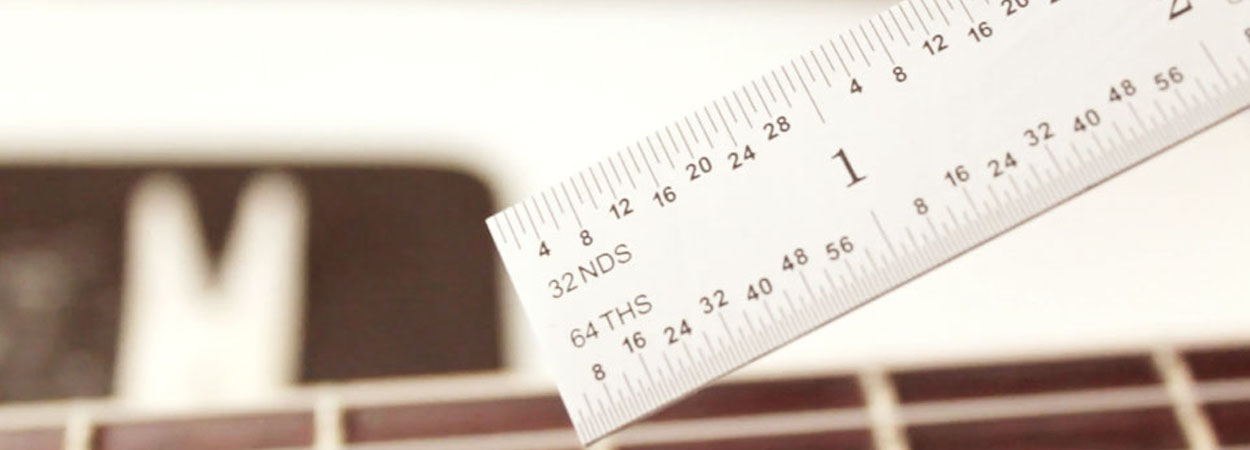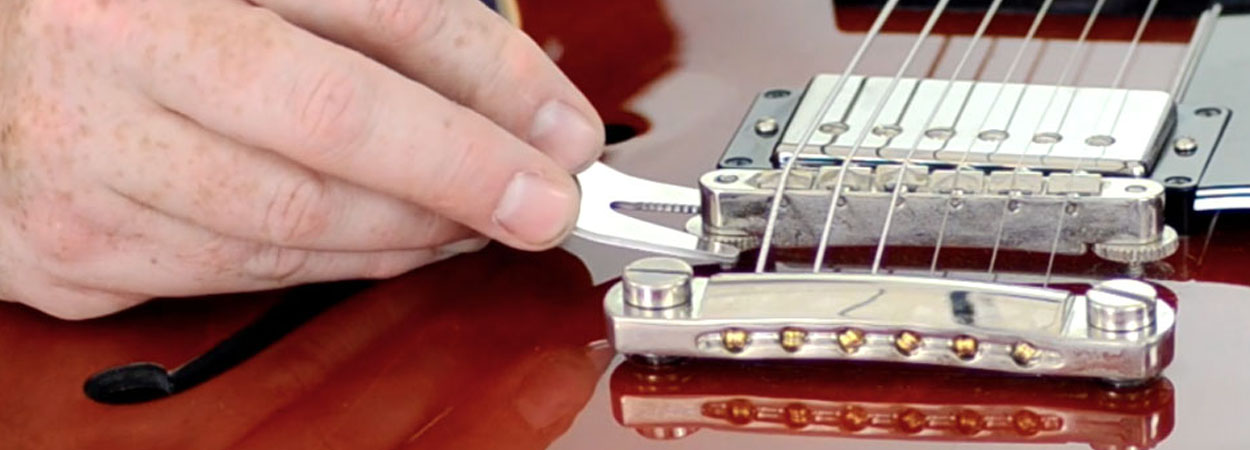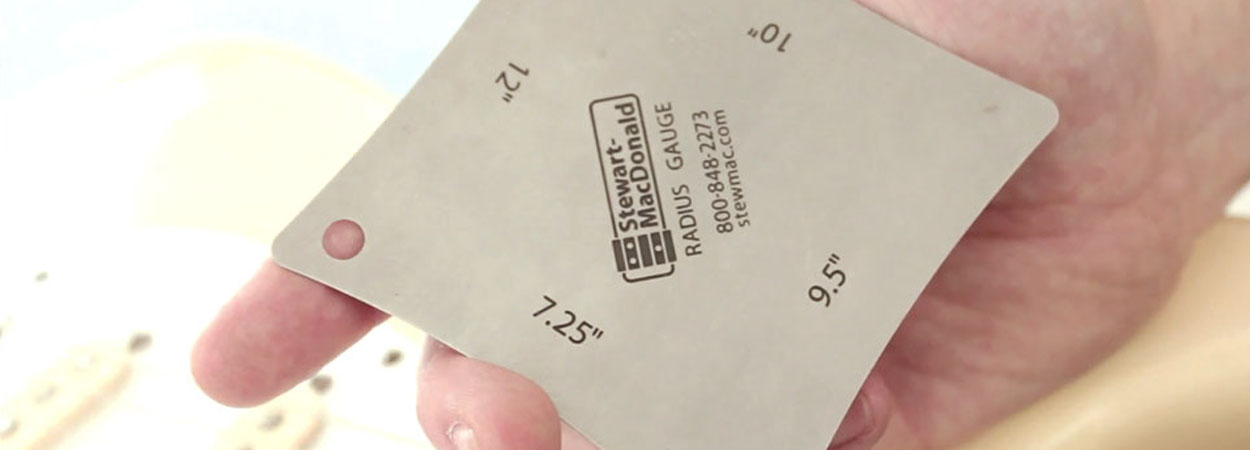The term 'action height' refers to the distance between the strings and the fretboard. Depending on what you are playing, you may want a different action height. James Collins walks us through how to properly measure and adjust action height.
Summary: What is action height?
Action height is simply the height of the strings above the fretboard. The key thing to get out of this conversation is that there is no 'one size fits all' action height! String height is a very personal thing that can depend heavily on the style of music you play. For example, a blues player may want a deliberately higher action so that they can 'dig in' to the notes and get some serious bends whereas a jazz player may want them far closer to the neck to play those quick runs. What you like is something that you learn as you try different string heights, and gradually you can settle on a certain height.
Summary: Standard action heights
For the sake of this video, we will be working towards a standard action height, which is three 32nds on the low string and two 32nds on the high string. If you are unsure as to what action you should work towards, this is a safe bet and will work for most rock / blues players. To be able to accurately measure and adjust the action, we need the following tools:
1. 6" rule with 32nds & 64ths

The ruler needs to have fine measurements as we are dealing in very subtle changes when adjusting the string height.
2. Small spanner

This isn't a necessity, but a small spanner like this well help you easily adjust the bridge height. It will also help t stop you damaging the bridge in any way by using more clunky, heavy duty tools.
Checklist: Changing the action
When you come to measure and change your action, here is a simple checklist that will help guide you through the process.
- 1. Get your guitar into pitch
- 2. Take the ruler and place it on the 12th fret, measuring from fret to string
- 3. Measure the height on the low E string and the high E string
- 4. Based on your factory specs, or the basic measurements in the text above, decide if you need to go up or down on either side
- 5.Use the spanner to turn the cogs on both sides of the neck. Remember that clockwise will lower the action and anti-clockwise will raise it. Two or three turns is enough
- 6. Tune the guitar again and then re-measure, repeat until you hit the required measurements.
Summary: 6 saddle bridges
On Fender style guitars, you will often see bridges with individual saddles. This means the process of adjusting your action height is a little more complicated. The main difference is that you need a radius tool. The radius tool allows you to get the strings matching the radius (curvature) of the guitar neck. This means you will get the most even action height across the neck and will massively improve the playability of the guitar. So, the tools that you will need are:
1. 6" rule with 32nds & 64ths

The ruler needs to have fine measurements as we are dealing in very subtle changes when adjusting the string height.
2. Radius Tool

This tool allows you firstly to measure your guitars radius (neck curvature) and then to measure the strings radius in relation to that. To measure your radius simply push one side of the tool down on the 12th fret and see if it matches perfectly. One of the 4 sides should match, thus determining your radius. You then aim to set your strings to this radius.
3. Allen Key

To adjust the saddles, you will need an allen key. Most guitars with a saddle bridge come with one, but if not you can find them pretty easily.
Checklist: Changing the action
When you come to measure and change your action, here is a simple checklist that will help guide you through the process.
- 1. Get your guitar into pitch
- 2. Take the ruler and place it on the 12th fret, measuring from fret to string
- 3. Measure the height on the low E string and the high E string
- 4. Based on your factory specs, or the basic measurements of three 32nd on the low side and two 32nd on the high side, decide if you need to go up or down on either side
- 5.Use the allen key to adjust the low E and high E saddles. Remember that clockwise will raise the action and anti-clockwise will lower it. There are two screws per saddle, both of which need the same amount of turns to keep them even
- 6. Rest the radius on the low and high E strings near the bridge pickup
- 7. The rest of the strings should be just touching the radius tool, so adust them accordingly until they are
- 7. Tune the guitar again and then re-measure, repeat until you hit the required measurements.